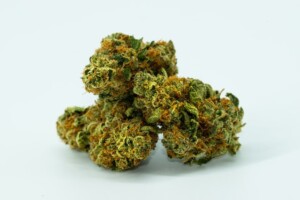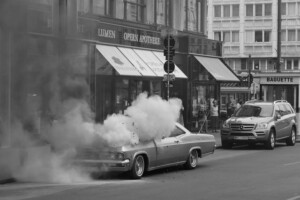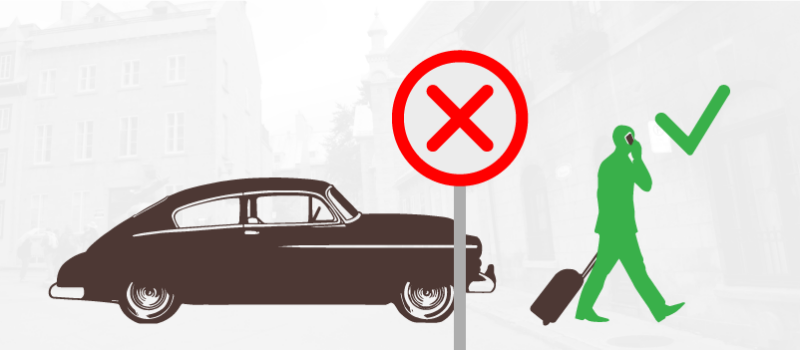Do you think you can safely participate in traffic after using cannabis? You wouldn’t be the first. In fact, many people who smoke weed think their stoned driving skills remain similar to when they’re sober. As a matter of fact, several studies cautiously reach similar conclusions. Still, governments around the world try to discourage people from driving under the influence of cannabis, imposing heavy fines and worse on whoever gets caught. That’s unsurprising, and it’s not necessarily a bad thing either. When push comes to shove, weed remains a drug that affects your capacity to judge and your situational awareness. That should be reason enough not to get behind the wheel after smoking weed, but let’s ho over the details together and see what we can learn.
Table of Contents
Busted For Weed Behind The Wheel
Driving while under the influence of drugs (no matter what kind) is punishable by law just about anywhere in the world. In the Netherlands at least, police have been intensifying their efforts to catch drivers under the influence since 2017. At that point, maximum blood levels were established for cannabis: any driver caught with more THC in their system is in serious trouble. Police checks may include saliva tests, followed by a blood test if the first result is a positive.
So why are controls so strict, especially when cannabis in traffic is concerned? According to many smokers at least, the influence of cannabis on driving seems less severe than that of hard drugs or alcohol. Interestingly, studies seem to support this point of view.

Studies Into Cannabis And Traffic Safety
A report issued by the Canadian Senate in 2002 stated that people driving while under the influence of cannabis drive more carefully than sober drivers. Researchers also noted that stoner drivers often self-report an awareness of their own increased reaction times. As a result, they tend to drive slower and more defensively.
The Journal of Analytical Toxicology published a report in 2012, stating that cannabis in traffic only caused minimal changes in performance and critical tracking. Such tracking denotes a driver’s ability to keep track of his or her driving environment in a systematic and accurate way. This ability was measured after being administered a THC dose of 700µ/kg.
The American National Highway Traffic Safety Administration also investigated cannabis and traffic safety. A study carried out in 2015 demonstrated that cannabis in traffic causes less disruption of driving capacity than alcohol. Alcohol increases the chances of a vehicle leaving its designated lane of the road. The organization compared accident patterns and found that people testing positive on cannabis did not cause more accidents than people who had not used cannabis.
In 2000, the UK Department of Environment, Transport, and the Regions published Cannabis and Driving: A Review of the Literature and Commentary. A combined analysis of multiple studies concluded that cannabis consumption leads to a more careful style of driving. Drivers under the influence of cannabis tend to switch lanes more frequently (though they did so intentionally, in contrast to the alcohol-using drivers mentioned in the US study mentioned in the previous section). Cannabis-affected drivers also needed more time to make decisions, on average. Still changes in driving style don’t necessarily mean worse driving. All in all, very few studies are able to indicate that cannabis in traffic increases the chance of an accident at all.
For a not-too-serious assessment of cannabis in traffic, watch the video by The Try Guys below…
(Video courtesy of The Try Guys)
What Happens If You Get Caught?
As you may have expected, that depends on where they catch you. In the Netherlands, there is a clearly defined limit to the concentration of THC in the body. If the police catch you with more than 3µg THC per liter of blood, you’re committing a felony. In addition, if they find alcohol or other illicit drugs in your blood, the legal THC limit drops to 0µg/L.
THC limits and regulations vary wildly between other countries. In the United States, rules differ between states, with legal experts struggling to draw up appropriate laws and criteria. The recent surge in legalization calls for clear rules and guidance, but so far, confusion appears to be the norm. Determining the point at which a driver is too high to drive safely is very hard to pinpoint.
The research mentioned above demonstrates that finding ‘unsafe’ THC levels is problematic to say the least. The difficulties scientists face while interpreting test results further complicate the problem. How to account for the fact that THC remains traceable in the blood for weeks after using cannabis? A test result may turn out positive while the last joint you smoked was a week ago. Surely, that one spliff last Saturday night ago won’t affect your driving on Thursday morning? So in a literal sense, the jury is still out on the matter across the United States.
Police Testing
These days, the police have some pretty accurate tests at their disposal, even though these accurate results are difficult to interpret once the have them. Officers may stop you when they suspect substance abuse judging by your driving, physical signs such as dilated pupils and the smell of weed in your car, or watching your vehicle leave the premises of a coffeeshop or other dispensary. If you get stopped in the Netherlands, cooperation in a saliva test is mandatory.

The test may indicate the presence of THC in your saliva, but that is insufficient evidence for criminal proceedings. That’s why you’ll have to come down to the station for a blood test. If this second test turns out positive too, that constitutes legal evidence. In the Netherlands, the police may decide to report you to the CBR National Traffic Bureau, which may start an investigation into your dependence on drug use. Further legal proceedings will follow, and we will illustrate the Dutch penalties as an example of what could happen if you get busted on driving baked.
Dutch Penalties For Cannabis In Traffic
In the Netherlands, driving a vehicle while under the influence of narcotics is considered a criminal offense. Penalties may include the following:
- Steep legal fines (ranging between €1,000 and €4,500);
- Driving disqualification (up to 5 years maximum);
- Prison sentences;
- If you get caught twice within a five-year period, you could lose your driver’s license altogether. In that case, you’ll have to reapply for exams to obtain a new license in the future.
Do realize that these are serious sanctions. In most other countries, penalties will be more severe, so using cannabis in traffic may be even riskier in terms of the legal consequences where you live.
The Downside Of Cannabis In Traffic
The big downside of using cannabis in traffic is your decreased ability to asses whether you’re still able to drive safely. You run a real risk of overestimating or underestimating yourself. Cannabis has psychoactive effects, so your brain doesn’t work the same way as it does when you’re sober. That makes weed fundamentally unsafe while driving a vehicle. In spite of all the legal and technical challenges of setting limits and rules, this is the foundation of the strict sanctions on cannabis in traffic we see around the world today.
So what do you do with this information if you’re a cannabis enthusiast with a car? The most important thing to remember is that smoking an average joint can easily lead to a 70µg/L blood test result. Generally speaking, THC levels drop fairly quickly, which usually leaves you below the Dutch 3µg/L limit within two to three hours. Nonetheless, THC halflife values vary between individuals due to differences in metabolism and other factors.

Don’t Burn Rubber After Burning Buds
At any rate, saliva tests can detect cannabis for at least 14 hours after use. Moreover, if your a frequent flyer in terms of weed consumption, elevated THC blood levels remain traceable well up to four days afterwards; long after the actual effects of those joints wear off. That means you could still test positive if you get caught. So all things considered, let’s be the responsible cannabis aficionados we ought to be. Take care of yourself and others and don’t get behind the wheel after smoking or eating cannabis. Just call a cab, take a nice stroll home, or ask a sober friend to pick you up. Enjoy cannabis, but remember: safety first!








